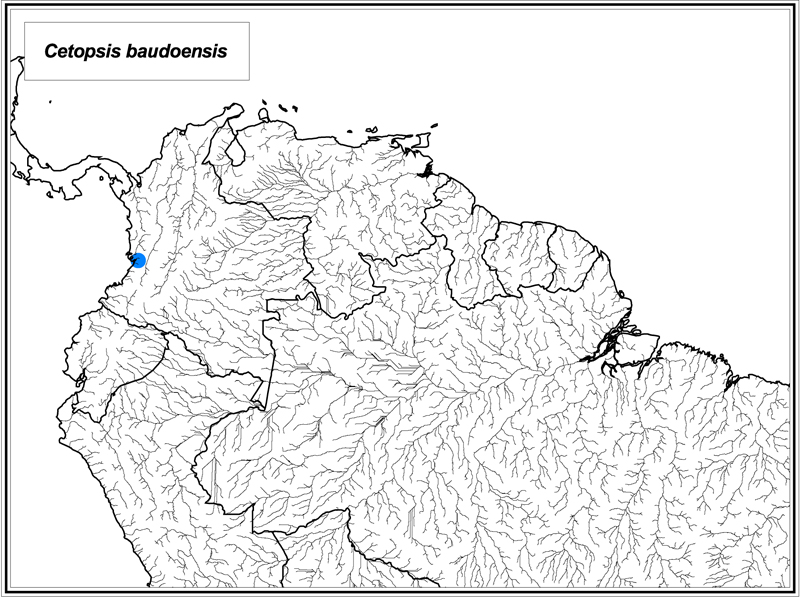
Reproduced from Vari, Ferraris and de Pinna (2005).
Cetopsis baudoensis (Dahl, 1960)
Identification: Cetopsis baudoensis can be distinguished from all of its congeners by the combination of the presence of an eye, the conical teeth on the vomer and dentary, the rounded posterior nares which is distinctly separated from the contralateral nares by a distance greater than the width of the posterior nares, the wide mouth with its width equal to one-half of HL, the absence of a dark humeral spot, the absence of a posteriorly-rounded, variably-developed, bilobed patch of dark pigmentation at the base of the caudal fin, the absence of a band of dark pigmentation along the distal portions of the anal fin, the possession of small dark spots on the lateral and dorsal surfaces of the body, the absence of eye-size or larger spots on the body, the possession of 9, rarely 10, pectoral-fin rays, 18 to 20 preanal vertebrae, 14 to 16 precaudal vertebrae, 33 to 35 caudal vertebrae, 47 to 49 caudal vertebrae, 20 to 22 branched anal-fin rays, and 23 to 27 total anal-fin rays. Maximum size: 187 mm SL.
Range: Cetopsis baudoensis is only known from the R�o Baud� basin of the Pacific Ocean versant of western Colombia.
Information from Vari, R. P., C. J. Ferraris Jr. & M. C. C. de Pinna. 2005. The Neotropical whale catfishes (Siluriformes: Cetopsidae: Cetopsinae), a revisionary study. Neotropical Ichthyology 3:127-238.
